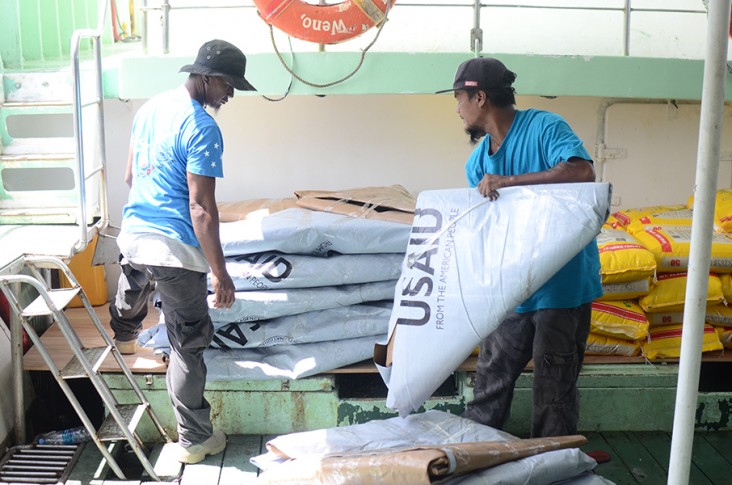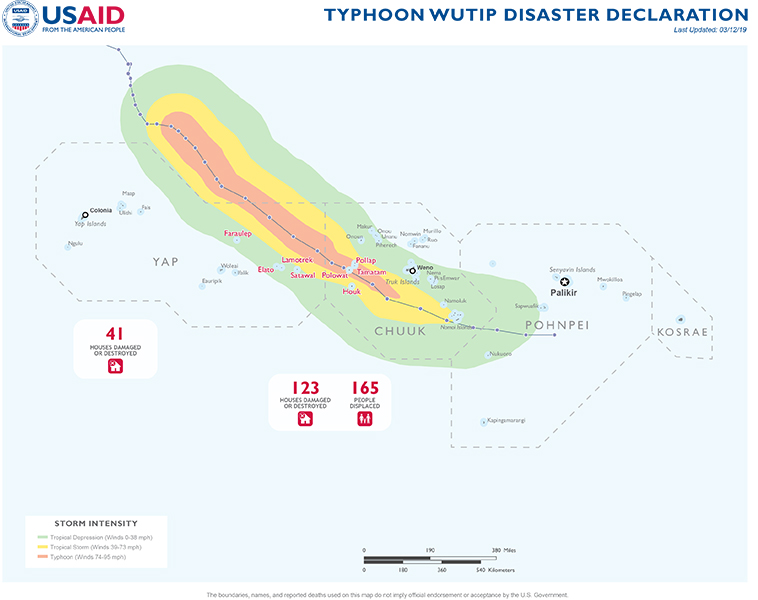- What We Do
- Agriculture and Food Security
- Democracy, Human Rights and Governance
- Economic Growth and Trade
- Education
- Environment and Global Climate Change
- Gender Equality and Women's Empowerment
- Global Health
- Humanitarian Assistance
- Transformation at USAID
- Water and Sanitation
- Working in Crises and Conflict
- U.S. Global Development Lab
Speeches Shim

Latest Micronesia Fact Sheet
Micronesia Map - 03-12-2019 ![]() (pdf - 316k)
(pdf - 316k)
Key Developments
Typhoon Wutip passed over Chuuk, Pohnpei, and Yap states in the Federated States of Micronesia (FSM) from February 19–22 as a Category 2 typhoon with sustained wind speeds of more than 100 miles per hour. The typhoon displaced at least 165 people and damaged or destroyed approximately 160 houses in both Chuuk and Yap. Strong winds and sea water inundation also destroyed food sources in affected areas and rendered water sources unsafe to drink. In response to the storm’s impact, local authorities declared states of emergency for Chuuk and Yap. On March 11, FSM President Peter M. Christian declared a national disaster due to the effects of the storm and requested international assistance.
On March 12, U.S. Chargé d’Affaires Heather Coble declared a disaster due to the effects of Typhoon Wutip. In response, USAID provided $100,000 to support immediate disaster relief activities for affected populations in FSM. In addition, USAID deployed staff based in the region to FSM to help coordinate response activities in collaboration with FSM authorities, U.S. Government (USG) interagency staff, regional humanitarian actors, and other donors.
Background
In November 2008, USAID assumed responsibility for disaster response and reconstruction in FSM and the Republic of the Marshall Islands (RMI) from FEMA, reflecting the transition of FSM and RMI from U.S.-administered trust territories to independent countries. USAID and FEMA developed an Operational Blueprint to provide a framework for USG disaster response and reconstruction in the two nations, under which USAID maintains FEMA’s previous commitment to supplementing host government efforts as necessary to provide humanitarian assistance in the aftermath of significant disasters. USAID collaborates closely with FEMA, as well as with USAID/Philippines and USAID’s Asia Bureau, to implement programs in FSM and RMI.


Comment
Make a general inquiry or suggest an improvement.